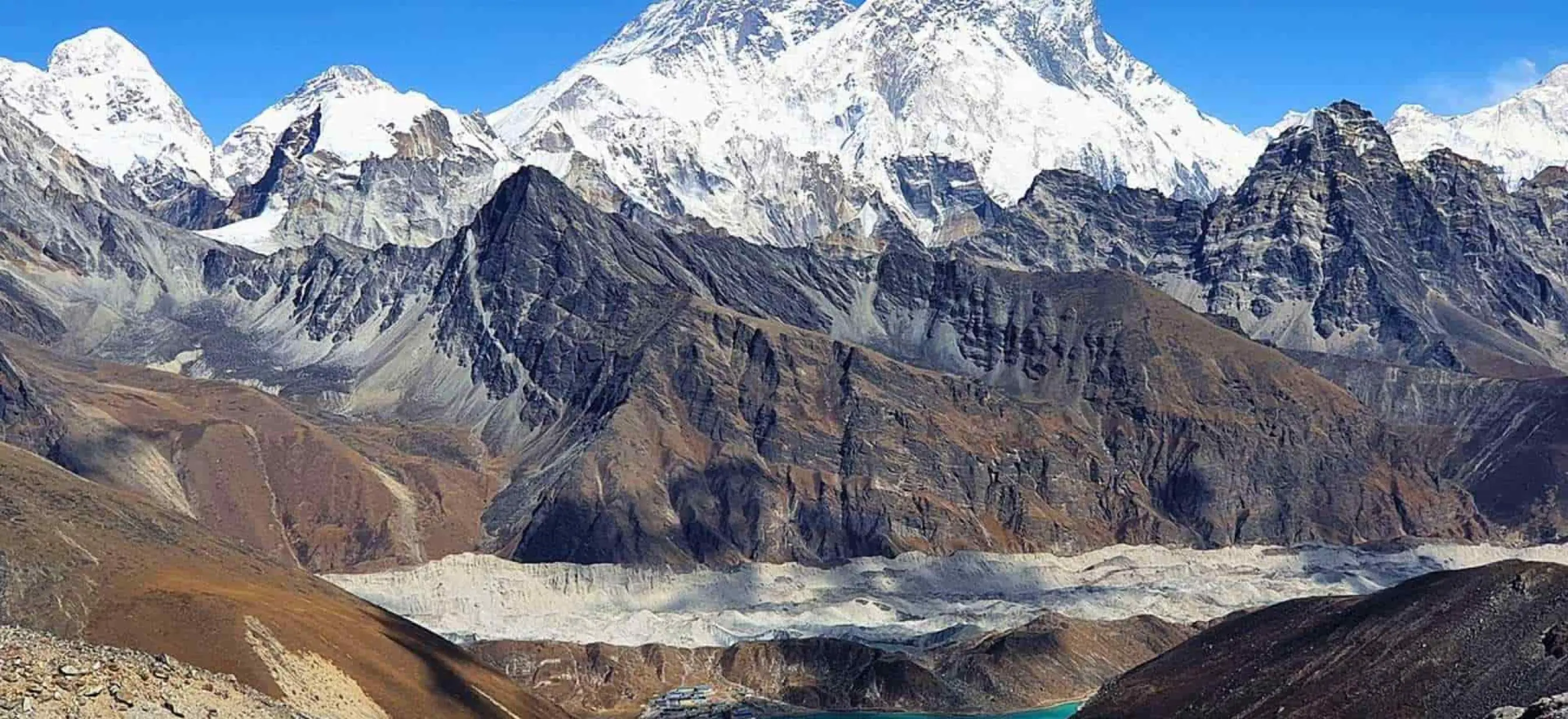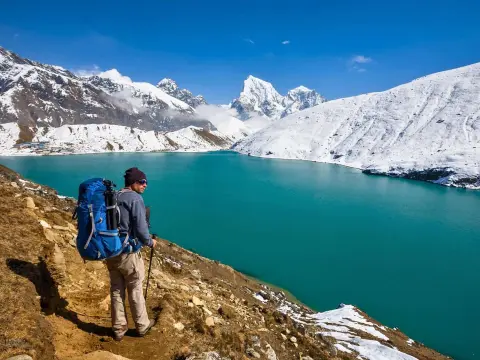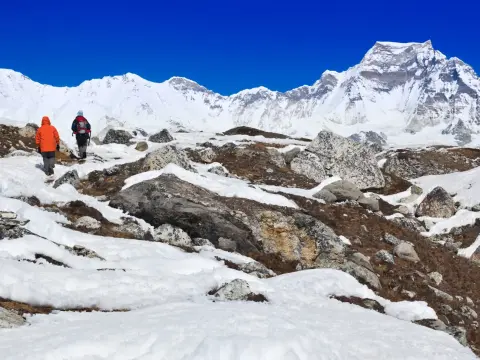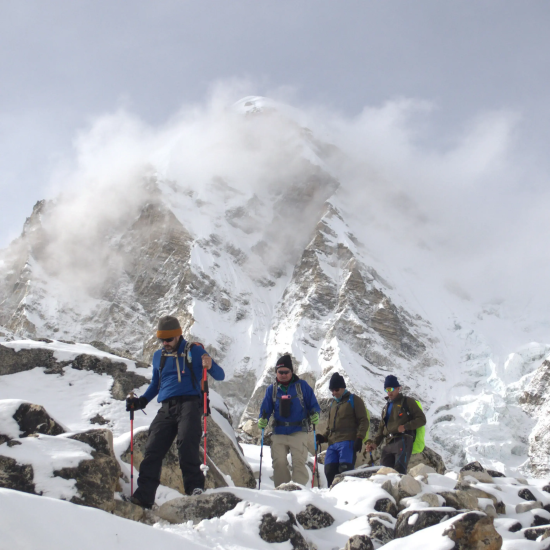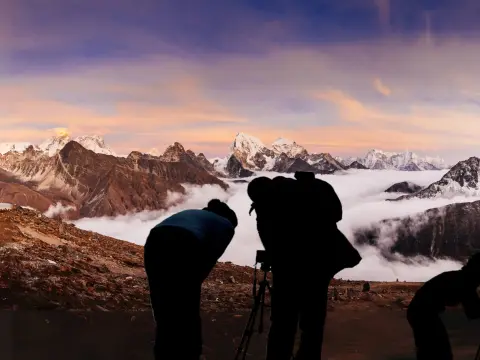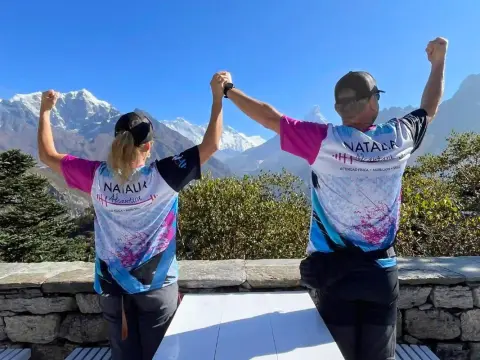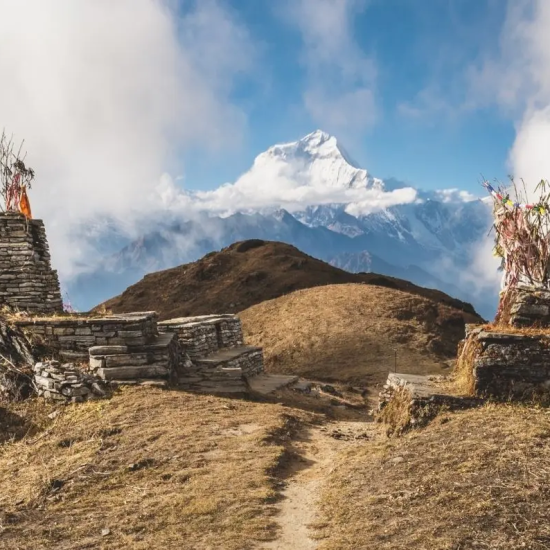The Renjo La Pass Trek via Gokyo Lake is one of the most scenic and culturally immersive treks in the Khumbu region of Nepal.
Renjo La Pass Trek via Gokyo Lake: A Hidden Gem in the Everest Region
Unlike the crowded Everest Base Camp trail, this route ventures into more serene landscapes, offering a fresh perspective on the Everest range. The trek’s crown jewel is Renjo La Pass, which rises to an elevation of 5,360 meters (17,585 feet)—a vantage point that gifts you with sweeping views of Mount Everest, Lhotse, Makalu, and Cho Oyu, some of the highest peaks on Earth. It’s a route that combines alpine wilderness, glacial valleys, and vibrant Sherpa culture in one unforgettable adventure.
The trek also takes you to the stunning Gokyo Valley, home to a chain of glacial lakes so pristine they appear otherworldly. Gokyo Lake itself, known as Dudh Pokhari, sits at 4,790 meters (15,715 feet) and is one of Nepal’s highest freshwater lake systems. The combination of the turquoise lakes, hanging glaciers, snowy ridgelines, and ancient Sherpa villages makes this trek not only visually spectacular but also spiritually enriching. It’s a journey designed for those seeking solitude, challenge, and natural grandeur in equal measure.
The Trek Unfolds: Scenic Trails and Himalayan Grandeur
The trek begins with a short yet exhilarating flight from Kathmandu or Ramechhap to Lukla, followed by a trail that gradually ascends through picturesque Sherpa villages like Phakding, Monjo, and Namche Bazaar. Namche, a famous Sherpa trading hub, is where most trekkers acclimatize while enjoying stunning views of Kongde Ri, Thamserku, and Everest. From here, the trail veers off the main EBC route and ascends through peaceful alpine landscapes toward Dole and Machhermo, gateways to the Gokyo region.
As you enter Gokyo Valley, you’ll witness its signature emerald lakes, cradled beneath Mount Cho Oyu (8,188 m), the sixth-highest mountain in the world. Climbing Gokyo Ri (5,360 m) is one of the most rewarding parts of the journey, offering a panoramic spectacle of the entire Everest massif. The crossing of Renjo La Pass, while challenging due to its steep ascent and high elevation, provides one of the most jaw-dropping mountain vistas in all of Nepal. The descent leads through the quiet village of Thame, completing a circular loop back to Namche and ultimately Lukla.
What You'll Experience on the Trek
This trek immerses you in the heart of the Sherpa homeland, with opportunities to experience their deep-rooted Buddhist traditions. You'll pass through prayer-flag-lined trails, spin prayer wheels at ancient chortens, and visit peaceful monasteries like the one in Thame, believed to be one of the oldest in the Khumbu. The cultural richness of the region enhances the spiritual ambiance of the high-altitude terrain, providing trekkers with more than just scenic memories.
The variety of landscapes on this trek is remarkable. From lush forests and roaring rivers to glacial moraines and icy passes, the terrain continually evolves, keeping each day fresh and exciting. You'll wake up to crisp mountain air, enjoy hearty meals in warm teahouses, and fall asleep under a star-filled Himalayan sky. The visual highlights include Ngozumpa Glacier, Nepal’s longest glacier, and the sparkling Gokyo Lakes that mirror the surrounding peaks. The serenity of the Gokyo Valley combined with the thrill of Renjo La creates a trekking experience like no other.
Altitude and Height Summary
The trek begins at Lukla (2,860 meters / 9,383 feet) and reaches its maximum altitude at Renjo La Pass (5,360 meters / 17,585 feet). Other important elevation milestones include Namche Bazaar (3,440 m), Dole (4,200 m), Machhermo (4,470 m), and Gokyo (4,790 m). The gradual altitude gain is designed to help trekkers acclimatize naturally and reduce the risk of Acute Mountain Sickness (AMS), which is always a concern in high-altitude regions.
Proper acclimatization days, such as the one spent in Namche, play a crucial role in preparing the body for the heights ahead. Trekkers are advised to drink plenty of fluids, take their time ascending, and be aware of any symptoms like headaches, nausea, or shortness of breath. The physical challenge of ascending steep terrain is compounded by thinner air, especially during the Renjo La crossing. Adequate physical preparation and mental resilience are key to a successful and safe trek.
Important Things to Know Before You Go
To complete this trek, you’ll need two permits: the Sagarmatha National Park Entry Permit and the Khumbu Pasang Lhamu Rural Municipality Permit. These are usually arranged through your trekking agency or can be acquired in Kathmandu or Monjo. No TIMS card is required for this region anymore. It’s important to carry these documents at all times, as there are multiple checkpoints along the trail.
Respecting local customs is equally important. The Everest region is home to the Sherpa people, whose culture is deeply influenced by Tibetan Buddhism. Always walk clockwise around stupas and mani walls, avoid touching religious artifacts, and remove your shoes before entering monasteries. Lastly, note that during the high seasons—spring (March–May) and autumn (September–November)—flights to Lukla often operate from Ramechhap (Manthali Airport) due to air traffic congestion in Kathmandu. This requires a 4-5 hour road transfer to catch your early morning flight.

